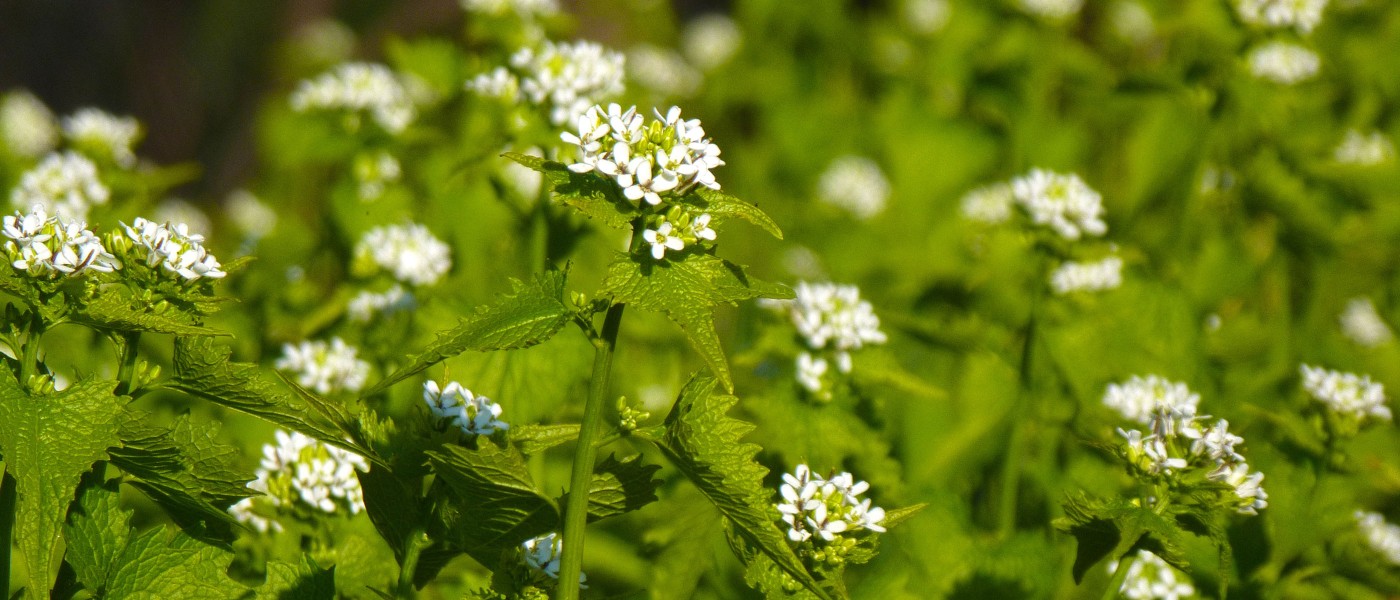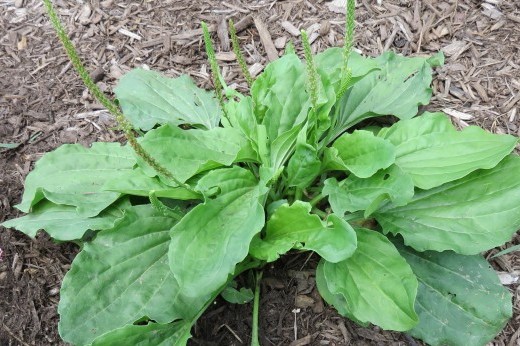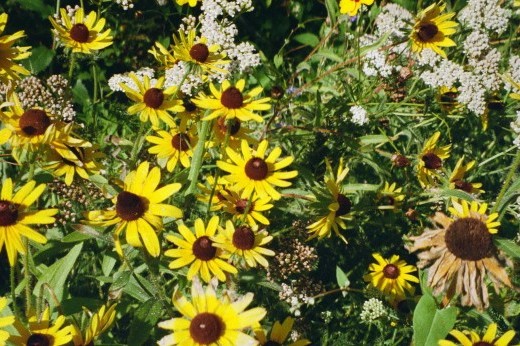New York City is not exactly known for its plants. In order to truly be surrounded by nature, to take in its wonders, people often insist on driving upstate.
But I’d argue that “nature” isn’t just a lake or an oak forest. It’s pigeons and starlings, dogs and roaches, it’s you and me, it’s the cherry or linden tree outside your window. And it’s in the most unexpected places, like between cracks in the sidewalk under your feet.
We call them weeds. But even the most tiny and unassuming plants can have intriguing histories, conflicts, and uses. For example, this little weed you’ve certainly seen hundreds of times:

Garlic mustard (Alliaria petiolata). And if it sounds pretty delicious, that’s because it can be.
Garlic mustard is a biennial, which means it takes two years to mature and produce seeds. First-year garlic mustard sticks close to the ground, developing scalloped, heart-shaped leaves. It kind of looks like wild ginger or creeping Charlie. In its second year, it shoots up tall and its leaves become triangular, with tiny, white, four-petaled flowers.
You know how we refer to broccoli, cauliflower, and cabbage as “cruciferous” vegetables? That’s because of these four-petaled flowers, which resemble a crucifix. Lots of things we eat are cruciferous, including all mustards. Just in case you needed an excuse to think about Jesus every time you eat a hot dog.

Garlic mustard’s taproot does taste horseradish-y (also a member of the Brassicaceae, or mustard family). And its leaves are technically edible, too. It contains very small amounts of cyanide, which can be alleviated by chopping and cooking it. When you crush it between your fingers, it smells deliciously garlicky.
There are a lot of recipes on the internet for garlic mustard. You can make pesto, wasabi, salad dressing, deviled eggs. I got optimistic when I saw these rave reviews in foraging guides, though I’ve tried to eat it several times in myriad ways—fried, boiled, blanched—and I’ve gotta say, it’s extremely bitter. In my opinion, only the freshest new leaves in the spring are sweet enough to eat.

Garlic mustard grows... well, everywhere, but you might begin to spot it when it sprouts in early spring. It especially thrives in dappled shade, and can be found in areas where there’s a lot of foot traffic.
Each plant can produce hundreds, sometimes thousands, of seeds that travel by wind or hitch a ride on our shoes. Which is kind of cool—a marvel of nature’s resilience—when you stumble upon it in a street tree bed, or in an abandoned lot. (You should probably not eat plants that you find in city tree beds and abandoned lots.)
But it’s less cool when it makes its way into the city’s forested areas. See, garlic mustard was brought to the Americas by European settlers who used it in dishes like salt fish and roast lamb. Apparently, it was also occasionally used to treat mouth ulcers and sore throats. But in Europe, there are dozens of insects that eat the pungent weed. Here, few insects and animals are attracted to it, and it has proliferated across much of the U.S.
_-_Guelph)
And therein lies the conflict. Garlic mustard is a colonizer, of sorts—it has been associated with declines in native plants. It releases chemicals into the soil that can impede the growth of nearby plants, potentially killing the mycorrhizal fungi that partner with them, and it’s able to create a thick groundcover that can outcompete native plants. It’s also been shown to disrupt the life cycle of the West Virginia white butterfly.
No wonder it’s a bane of conservationist gardeners everywhere. They can make a dent in small populations by pulling it in the early spring, before it develops its seeds. But once it takes over a large area, it’s nearly impossible to eliminate. There is some evidence that over the course of many years, it can die off on its own. Still, it can set back other plants during that time.
So the next time you’re out on a walk this spring, keep an eye (and a nose) out for the delicious, villainous, imported garlic mustard. It may look unassuming, but to foragers and gardeners, it can be a blessing or a curse.
Note: Forage safely! Only harvest if you have permission; most parks and gardens in New York City don’t allow visitors to remove plants. Make sure you accurately identify any plant you eat, and avoid collecting from a site you can’t confirm is free of lead or other toxins.




